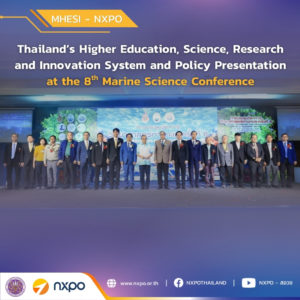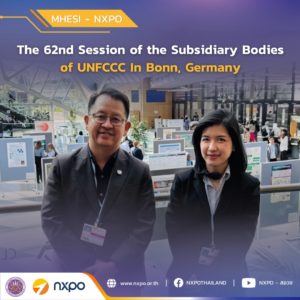
The Annual Report 2021 released by the National Higher Education, Science, Research and Innovation Policy Council (Policy Council) contained the analysis of science, research and innovation (SRI) capability in 15 sectors. This article presents SRI current capability and areas of development in next-generation automotive, creative economy, circular economy, innovation-driven enterprise (IDE) and innovation ecosystem.
Next-Generation Automotive
Zero emission vehicles (ZEVs) and Autonomous, Connected, Electric, and Shared (ACES) trend offer solutions to air pollution and road safety. The National Electric Vehicle Policy Committee aims to achieve a ZEV production target of 50% of all new cars by 2030 and expand to 100% by 2035.
Current Capability. The policies should be set for short-term (5 years), medium-term (10 years) and long-term (15 years), defining milestones and strategies to achieve each target.
Areas of Development. The government should assist and support this sector by having a clear policy, developing the technological capacity and entrepreneurs, building charging stations, introducing tax and non-tax incentives and raising public awareness.
Creative Economy
The fundamental concept of creative economy is to employ knowledge, creativity, intellectual properties, culture and history to add value to goods and services.
Current Capability. In the Global Creativity Index (GCI) 2015 report published by the Martin Prosperity Institute, Thailand’s overall score was 0.365 which placed the country in the 82nd position among 139 countries. For each dimension, Thailand was ranked 38th in technology, 84th in talent and 105th in tolerance.
Areas of Development. An action plan for the creative economy has been formulated for phase 1 implementation from 2020-2022. The plan aims for a 5% increase in creative goods and services and one city recognized as a creative city by the UNESCO. The plan contains strategies and action plans in four areas: 1) knowledge management, 2) talent development, 3) enterprise development and 4) city planning and ecosystem. In addition, the creative economy has been included in the Bio-Circular-Green Economy (BCG) national agenda to add jobs and generate income by utilizing creativity.
Circular Economy
Not only is the circular economy a key strategy to reduce greenhouse gas emissions to combat climate change, it also offers new business opportunities and creates green jobs.
Current Capability. A study revealed a total of 1,314 scientific publications (as of April 2020) by Thai researchers in the areas related to circular economy. The analysis showed that most of research work is in the field of waste management, not much on the circular economy. Therefore, studies to generate knowledge and technology in circular concept and design are strongly encouraged.
Areas of Development. More funding should be allocated to support R&D in circular economy and circular economy transformation in the industry with initiatives such as product development utilizing secondary raw materials and a new organization with a direct mandate on circular economy to provide a connection to all sectors.
Innovation-Driven Enterprise (IDE)
IDEs are essential players in the innovation-driven economy. The Thai government has been promoting the IDE development with an initiative to build Thailand Science Park in 2002 and later on regional science parks, as well as measures such as an innovation fund for SMEs and Thai Innovation List to facilitate the government procurement program.
Areas of Development. A clear policy and strong action plan are needed to upgrade all types of enterprises – large corporates, SMEs and startups – to IDEs and unicorns in order to produce high value-added goods and services, create high-paying jobs, and increase their competitiveness in the global market. The policy and action plan should aim to build innovation capability, an IDE ecosystem and develop entrepreneurial mindset and innovation culture.
Innovation Ecosystem
A dynamic innovation ecosystem is necessary for building a strong economy which leads to wealth and sustainability. Therefore, innovation-driven nations place emphasis on designing proper policy, easing legal barriers and introducing incentive measures to enrich an innovation ecosystem in order to effectively drive the economy and society with innovation.
Areas of Development. Thailand’s innovation ecosystem still has some weaknesses. The government has attempted close the gap with some initiatives such as an innovation fund for IDEs, demand creation for innovative products and services, tax and non-tax incentive measures, removing legal barriers to innovation development, reforming higher education, science, research and innovation system, and supporting capacity building and infrastructure development.







